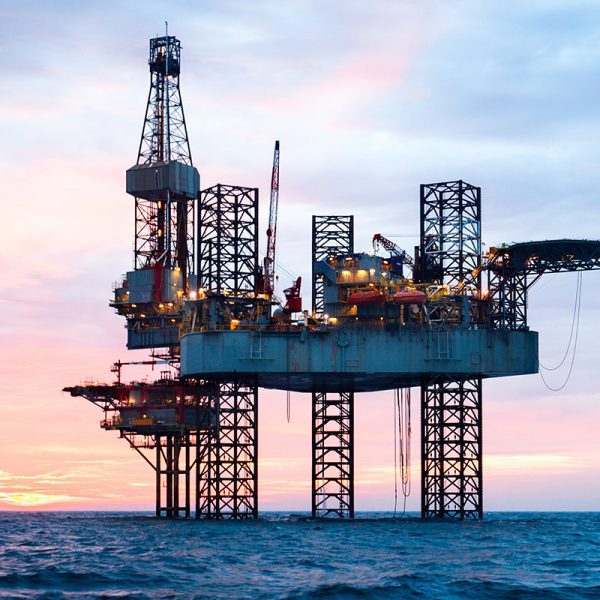
Reverse Osmosis
Reverse Osmosis is the process of separating pure water from salt water and is a highly effective means of obtaining potable water from a saltwater supply.
By separating pure water from salt water through a semipermeable membrane, and applying a pressure greater than the naturally generated osmotic pressure to the salt water concentration, the pure water molecules within the salt water are able to selectively permeate through the membrane element and leave the majority of the dissolved salts, organic material and suspended solids to be disposed of.
What results is the accumulation of pure water from desalination of the salt water concentration, which is then ready for use.
ROCHEM® TS-Module Desalination Process
Raw sea water is supplied to a pre-filtration stage of the RO unit where it enters backwashable, multilayer sand filters. The sand filters contain quartz sand and proprietary Rocholith filtration particles which act to mechanically retain all sediment particles over 50 μm in size. The feedwater then has its temperature regulated to optimum degree before being passed to a cartridge filter for fine filtration.
The feedwater then has its pressure raised by high pressure pumps for delivery to the TS-Module membranes. The ROCHEM® TS-Module membrane elements comprise of layers of membrane cushions which are made up from a sheet of permeate carrier sandwiched between a thin film of composite Polyamide/Polysulfone material. The membrane cushions are separated by feed spacers at minimal distance and are wrapped around a permeate collecting tube. The whole membrane module is contained within a pressure vessel with flanges at either end for input of the feedwater and output of the wastewater.
When the pressurised feedwater enters and passes over the ROCHEM® TS-Module membrane surfaces, a gradual process of reverse osmosis takes place, with 33% of the seawater permeating through the membrane elements as high-quality pure water. The remaining 67% of the feedwater, now highly concentrated in rejected salts and impurities, leaves the TS-Module as wastewater to be discharged.
ROCHEM® TS-Modules
The significant difference between ROCHEM® TS-Modules and conventional spiral wound modules is that ROCHEM® TS-Modules combine different feed channels, permeate carriers and membranes in one module element. The open feed channel design makes the TS-Module much more tolerant to feed water quality than spiral wound modules. This special design enables an open, straight-line flow channel which ensures the feedwater passes with negligible resistance and drastically reduces fouling and scaling. The TS-Module further allows the use of relatively simple mechanical pre-filtration and, more importantly, eliminates the need for feed water pre-treatment by chemical dosing.
Features
• Skid/frame assemblies of welded construction, in stainless steel AISI 316. For long life and minimal maintenance.
• RO plants are automatically flow/pressure regulated. This allows the plant to always provide the maximum capacity achievable with the given feed water temperature/salinity at any given time.
• Exchange modules are available.
• Long membrane life because of the low scaling and fouling risk, as well as the excellent membrane cleanability associated with the open feed channel feature. Membrane life is typically 5 years (35 000 hours).
• Low chemical products cost. Chemicals are only used for membrane cleaning, as there is no need for chemical treatment of the feed water.
• All units are equipped with a failsafe system which provides protection from potentially damaging external conditions and/or operator errors.
• At each normal system shutdown, all sea water wetted components are rinsed with clean permeate thanks to the fully automatic “Stop & Rinse” mode. This prevents any organic matter-based fouling developed during shut-down periods of up to 2 weeks, without the need for chemical disinfection.
Design and Construction Standards
The ROCHEM® RO Fresh Water Generators are designed, fabricated, and approved according to the following:
International Standards:
• DIN – (German Industrial Standard)
• VDE – (Association of German Electricians)
• VDMA – (Organisation of German Mechanical Engineers)
• IEC – International Electric Standards for Electr. Motors
• ISO – International Standards
Navy:
• NATO-Stanag BV 043(85) Shock-resistance
• NATO-Stanag BV 044(87) Vibration-resistance
• NATO-Stanag BV 0120 rev. 03/86 Electromagnetic Compatibility (EMC)
• BV 3000-2, rev. 02/91 E-Plants, planning and general directives
• BV 3100 E-Plants
• BV 3300, rev. 06/90 E-Plants, switch cabinets, switches
• BV 3400, rev. 03/88 E-Plants, cabling
The ROCHEM® RO units are designed and constructed to fulfil the requirements of the following Classification societies:
• Germanischer Lloyd
• Lloyds Register of Shipping
• American Bureau of Shipping
• Det Norske Veritas
• Bureau Veritas
• RINA Certificates for high pressure hoses
The main components of the RTS ROCHEM® black and grey water treatment plants are the bioreactor segments and ROCHEM® FS-Modules (Ultrafiltration (UF) modules). Together these elements produce an elegant combination of the widely known activated sludge process but with a more sophisticated open-flow, ultrafiltration membrane separation process.
ROCHEM® Membrane Bioreactor
Before entering the bioreactor segment, the black and grey water passes through a prefiltration stage for the separation of fibres and particles. The waste then enters the bioreactor vessel which consists of the UF membrane elements entrenched in an oxygen rich environment.
In the bioreactor vessel, the filtrate is passed as a pressurised cross flow over the ROCHEM® FS-Modules surfaces which due to optimised velocities and the design of membrane surfaces the separation of suspended solids and bacteria from clean water occurs at high flux rates. The waste from this membrane separation process is then aerobically degraded to bio-waste by the introduction of oxygen through air diffusers installed at the bottom of the reactor. The bio-waste produced from the aerobic digestion of the black and grey water contaminants is then collected in a sludge tank for disposal or further treatment. The 94-97% of clean-waste water processed in the ROCHEM MBR can then be reused as technical water or pumped overboard in compliance with MEPC. 227 (64).
The process in principle is essentially the same for 20 persons or 4000 persons by changing the number of bioreactors and membrane modules to suit the wastewater volume.
Get in touch